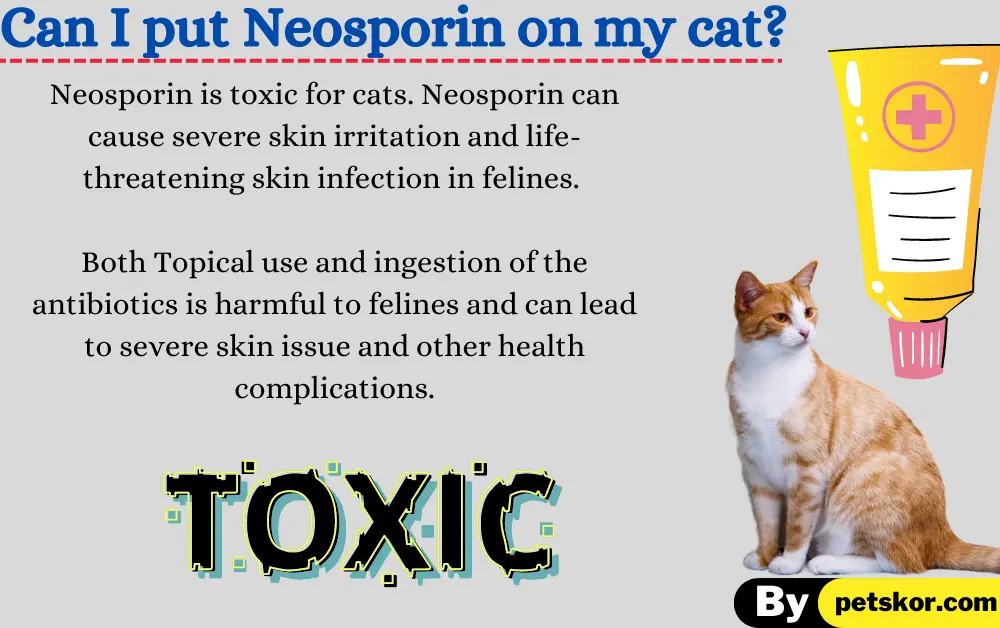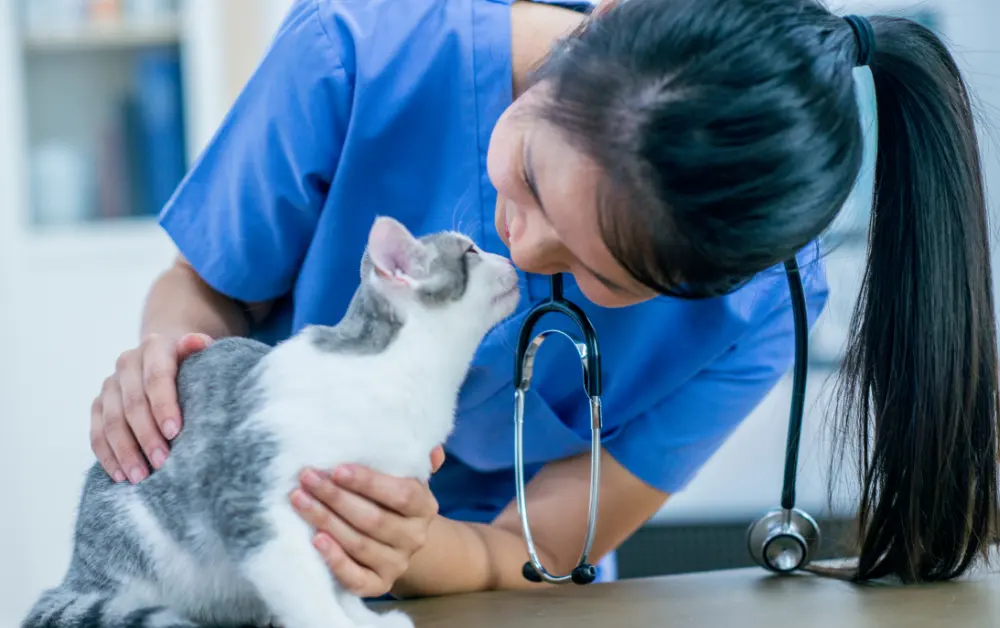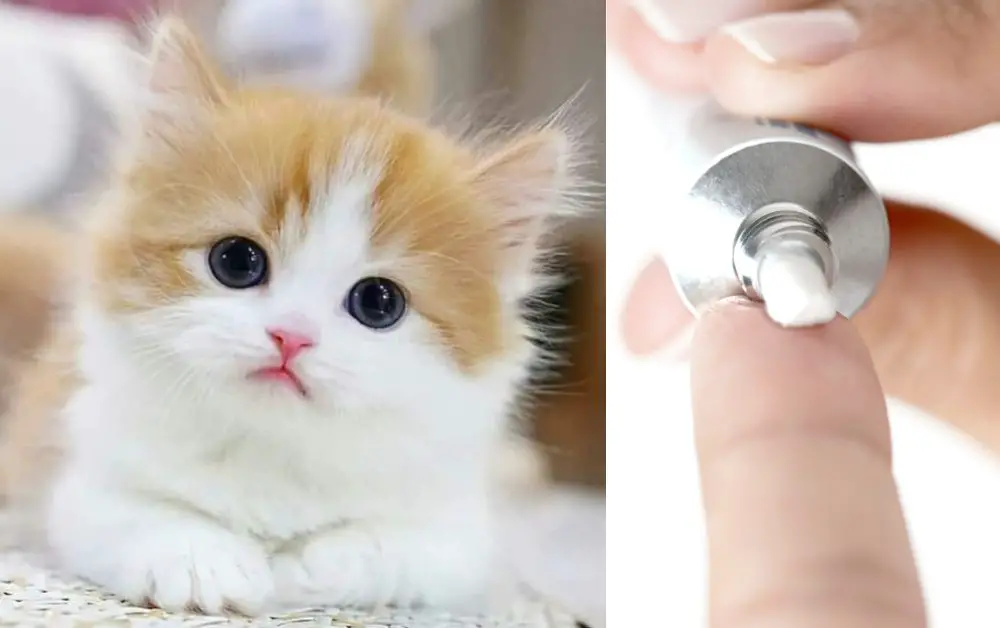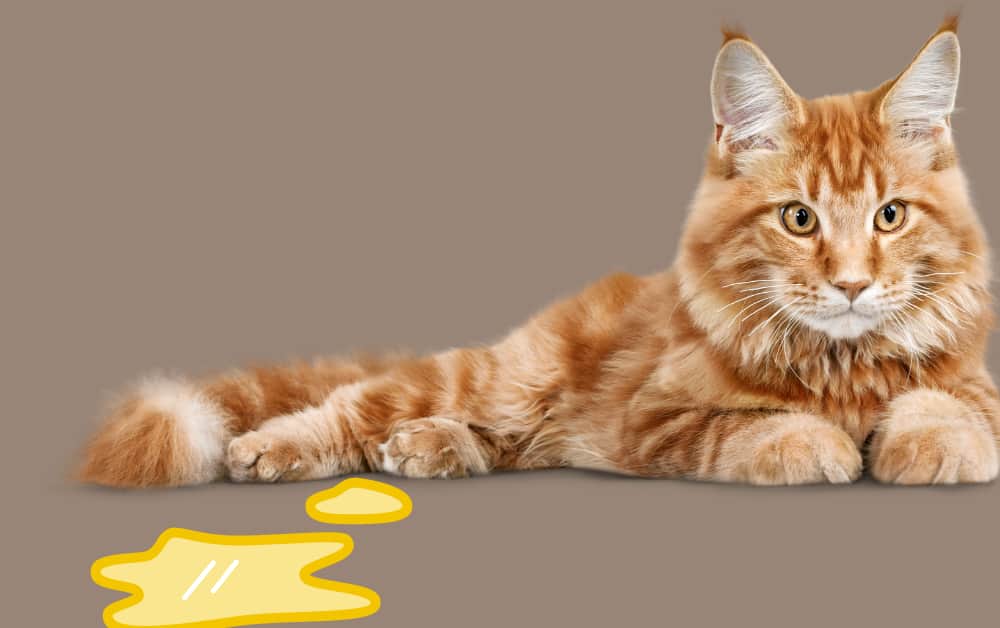Neosporin, a combo of triple antibiotics neomycin, polymyxin B, and bacitracin, is a topical treatment used for controlling and treating skin infections in humans and dogs.
Cats owners often use human medication on their feline friends without knowing the benefits and risks of these medicines. So Can I put Neosporin on cats wound?
Neosporin is toxic for cats. Neosporin can cause severe skin irritation and life-threatening skin infection in felines. Both Topical use and ingestion of the antibiotics is harmful to felines and can lead to severe skin issue and other health complications.
Before using any over-the-counter treatment for your pet, taking your vet’s advice is essential.
This blog post is a detailed guide about Neosporin for cats and all related queries. Keep reading for the excellent well of your cute feline pet.
Key Takeaways:
- Neosporin is not safe for cats. Never put this triple antibiotic ointment on your cat’s wounds and infection. Use a safe and vet-recommended wound infection treatment for your pet.
- Neomycin and polymyxin B can cause severe allergic reactions in cats.
- The topical ointment can lead your pet to severe allergic reaction, excessive licking, and red and swollen skin.
- Ingesting Neosporin can cause kidney damage.
- The antibiotic ointment is used on dogs with veterinarian advice.
What is Neosporin?
Neosporin is an antibiotic ointment that contains three different antibiotics polymyxin B, neomycin and bacitracin. It is typically used to help prevent skin infections caused by minor cuts, scrapes, and burns.
Neosporin kills the bacteria in the affected area, thereby preventing infection. It also helps to reduce redness, swelling, and pain associated with the wound.
The medicine is available in both topical ointment and cream.
Can I put Neosporin on my cat?
Applying Neosporin to cats is potentially dangerous and can lead to serious skin complications, including contact allergies, toxic reactions, and even death.
Cats often lick the area where you apply the ointment, which can cause them to ingest the medicine, leading to serious complications, including kidney damage.
Neosporin contains antibiotics that can be toxic for cats if ingested in large amounts.
In some cats, it only causes a mild skin reaction, not serious issues.
However, it is good to use a safe alternative to treating your cat’s minor wound, minor cuts, scrapes, and burns to control further skin irritation.
Never put Neosporin or any other topical ointment on your cat without consulting a veterinarian first.
Your veterinarian my also prescribe pain relief medicine.

Signs of Neosporin Toxicity In Cats
The common signs and symptoms of Neosporin toxicity in cats are:
- Excessive scratching, biting
- Swelling and redness in the skin
- Hair falling
- Severe allergic reactions
- Difficulty breathing or panting
- Vomiting and diarrhea
- Drooling or excessive salivation
- Disorientation or confusion
- Weakness or lethargy
- Seizures
What happens if a cat licks Neosporin?
If your feline friend lick and ingests neomycin from its body, there is a risk of kidney and liver damage. However, if a cat does happen to lick some Neosporin, the effects will be minimal and short-term.
Keep a close eye on your pet if you observe your kitty lick the antibiotic.
If symptoms, skin irritation, vomiting, diarrhea, or excessive salivation appear, don’t be late to take your pet to a vet.

Can I use Neosporin to treat my cat’s eye infection?
Never use Neosporin for treating your cat’s eye infections. Cats have a different sensitivity nature to medicine than humans and dogs. Some medications that are safe for your pet dog and us can be toxic and even deadly to cats.
You can use Terramycin Antibiotic Ointment to treat infection in your kitty eyes.
Eye infections in cats should be evaluated by a veterinarian who can prescribe the proper treatment.
Treat bacterial eye infections of your pet on time. Even if the infection appears to be minor, it’s essential to get a professional opinion.
Untreated eye infections can lead to more severe complications such as blindness.
Read some more of our informative Articles:
What to not put on a cat wound?
Never use hydrogen peroxide, alcohol, or acid on your cat’s wound. Hydrogen peroxide can cause tissue damage and can slow the healing process.
Alcohol and acid can also cause burning, stinging, and discomfort.
It is important to note that human antiseptic creams are unsuitable for cats. If your cat has a wound, contact your vet as soon as possible.
Depending on the severity of the wound, they may recommend an antibiotic ointment or may even require treatment in the form of oral antibiotics.
Do not over-cleaning a wound, as this can cause irritation and further damage.
How can I treat my cat’s wounds at home?
1. Keep the wound clean: Cleaning the wound regularly with a saline solution or warm water can help reduce inflammation and prevent infection. Never use hydrogen peroxide, alcohol, or witch hazel.
2. Apply antiseptic creams: Applying a safe antiseptic cream to the wound can help reduce bacteria and speed up healing. Only use topical treatment with vet advice.
3. Use bandages: Wrapping the wound in a bandage can help protect it from dirt and debris and prevent infection.
4. Monitor the healing process: Pay attention to the wound and monitor it for signs of infection, including redness, swelling, and discharge.
5. Take them to the vet: If the wound does not seem to be healing or your cat shows signs of infection, take them to the vet for further treatment.
FAQ:
Is Neosporin safe for dogs?

The short answer is yes, Neosporin is generally safe for dogs when used correctly and with vet advice only.
This triple antibiotic ointment contains neomycin, bacitracin, and polymyxin B, which are very effective at treating bacterial skin infections in dogs.
However, use the topical treatment in small amounts and on specific areas of the body.
A physical checkup of your dog’s skin is required. Specific skin problems need a different version of antibiotics and will not be treated with Neosporin.
Can you put Vaseline on a cat wound?
You can put a less amount Vaseline on your cat’s dry skin and wound for comfort.
However, It is usually not recommended to put Vaseline on a cat wound.
It may be too thick for the wound and create an ideal environment for bacteria to grow.
Instead, it is best to clean the wound with warm water and soap or use a veterinarian-recommended antiseptic solution.
What ointment is good for cat wounds?
Pet parents Use Ointment and other infection-controlling creams with a professional vet’s advice on cats. There are specific wound Ointments available that you can use on your pet safely.











